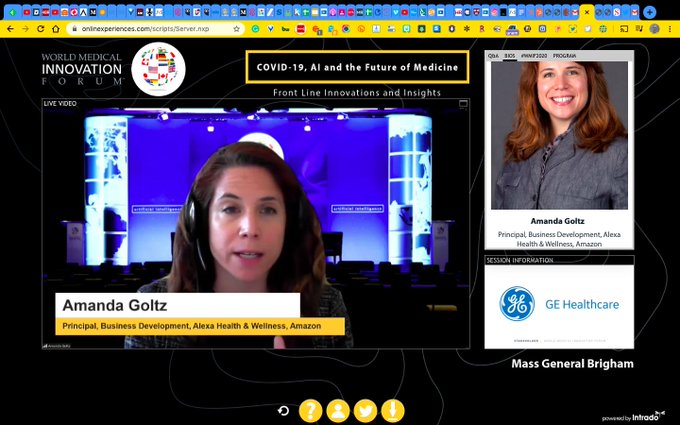Eight Subcellular Pathologies driving Chronic Metabolic Diseases – Methods for Mapping Bioelectronic Adjustable Measurements as potential new Therapeutics: Impact on Pharmaceuticals in Use
Curators:
- Cardiovascular Expertise – Dr. Justin D. Pearlman, MD, PhD, FACC
- Pharmacology and Oncology Expertise – Dr. Stephen J. Williams, PhD
- Principal Investigator, initiator of the project – Aviva Lev-Ari, PhD, RN
THE VOICE of Aviva Lev-Ari, PhD, RN
In this curation we wish to present two breaking through goals:
Goal 1:
Exposition of a new direction of research leading to a more comprehensive understanding of Metabolic Dysfunctional Diseases that are implicated in effecting the emergence of the two leading causes of human mortality in the World in 2023: (a) Cardiovascular Diseases, and (b) Cancer
Goal 2:
Development of Methods for Mapping Bioelectronic Adjustable Measurements as potential new Therapeutics for these eight subcellular causes of chronic metabolic diseases. It is anticipated that it will have a potential impact on the future of Pharmaceuticals to be used, a change from the present time current treatment protocols for Metabolic Dysfunctional Diseases.
According to Dr. Robert Lustig, M.D, an American pediatric endocrinologist. He is Professor emeritus of Pediatrics in the Division of Endocrinology at the University of California, San Francisco, where he specialized in neuroendocrinology and childhood obesity, there are eight subcellular pathologies that drive chronic metabolic diseases.
These eight subcellular pathologies can’t be measured at present time.
In this curation we will attempt to explore methods of measurement for each of these eight pathologies by harnessing the promise of the emerging field known as Bioelectronics.
Unmeasurable eight subcellular pathologies that drive chronic metabolic diseases
- Glycation
- Oxidative Stress
- Mitochondrial dysfunction [beta-oxidation Ac CoA malonyl fatty acid]
- Insulin resistance/sensitive [more important than BMI], known as a driver to cancer development
- Membrane instability
- Inflammation in the gut [mucin layer and tight junctions]
- Epigenetics/Methylation
- Autophagy [AMPKbeta1 improvement in health span]
Diseases that are not Diseases: no drugs for them, only diet modification will help
Image source
Robert Lustig, M.D. on the Subcellular Processes That Belie Chronic Disease
https://www.youtube.com/watch?v=Ee_uoxuQo0I
Exercise will not undo Unhealthy Diet
Image source
Robert Lustig, M.D. on the Subcellular Processes That Belie Chronic Disease
https://www.youtube.com/watch?v=Ee_uoxuQo0I
These eight Subcellular Pathologies driving Chronic Metabolic Diseases are becoming our focus for exploration of the promise of Bioelectronics for two pursuits:
- Will Bioelectronics be deemed helpful in measurement of each of the eight pathological processes that underlie and that drive the chronic metabolic syndrome(s) and disease(s)?
- IF we will be able to suggest new measurements to currently unmeasurable health harming processes THEN we will attempt to conceptualize new therapeutic targets and new modalities for therapeutics delivery – WE ARE HOPEFUL
In the Bioelecronics domain we are inspired by the work of the following three research sources:
- Biological and Biomedical Electrical Engineering (B2E2) at Cornell University, School of Engineering https://www.engineering.cornell.edu/bio-electrical-engineering-0
- Bioelectronics Group at MIT https://bioelectronics.mit.edu/
- The work of Michael Levin @Tufts, The Levin Lab
THE VOICE of Dr. Justin D. Pearlman, MD, PhD, FACC
THE VOICE of Stephen J. Williams, PhD
Ten TakeAway Points of Dr. Lustig’s talk on role of diet on the incidence of Type II Diabetes
- 25% of US children have fatty liver
- Type II diabetes can be manifested from fatty live with 151 million people worldwide affected moving up to 568 million in 7 years
- A common myth is diabetes due to overweight condition driving the metabolic disease
- There is a trend of ‘lean’ diabetes or diabetes in lean people, therefore body mass index not a reliable biomarker for risk for diabetes
- Thirty percent of ‘obese’ people just have high subcutaneous fat. the visceral fat is more problematic
- there are people who are ‘fat’ but insulin sensitive while have growth hormone receptor defects. Points to other issues related to metabolic state other than insulin and potentially the insulin like growth factors
- At any BMI some patients are insulin sensitive while some resistant
- Visceral fat accumulation may be more due to chronic stress condition
- Fructose can decrease liver mitochondrial function
- A methionine and choline deficient diet can lead to rapid NASH development




























